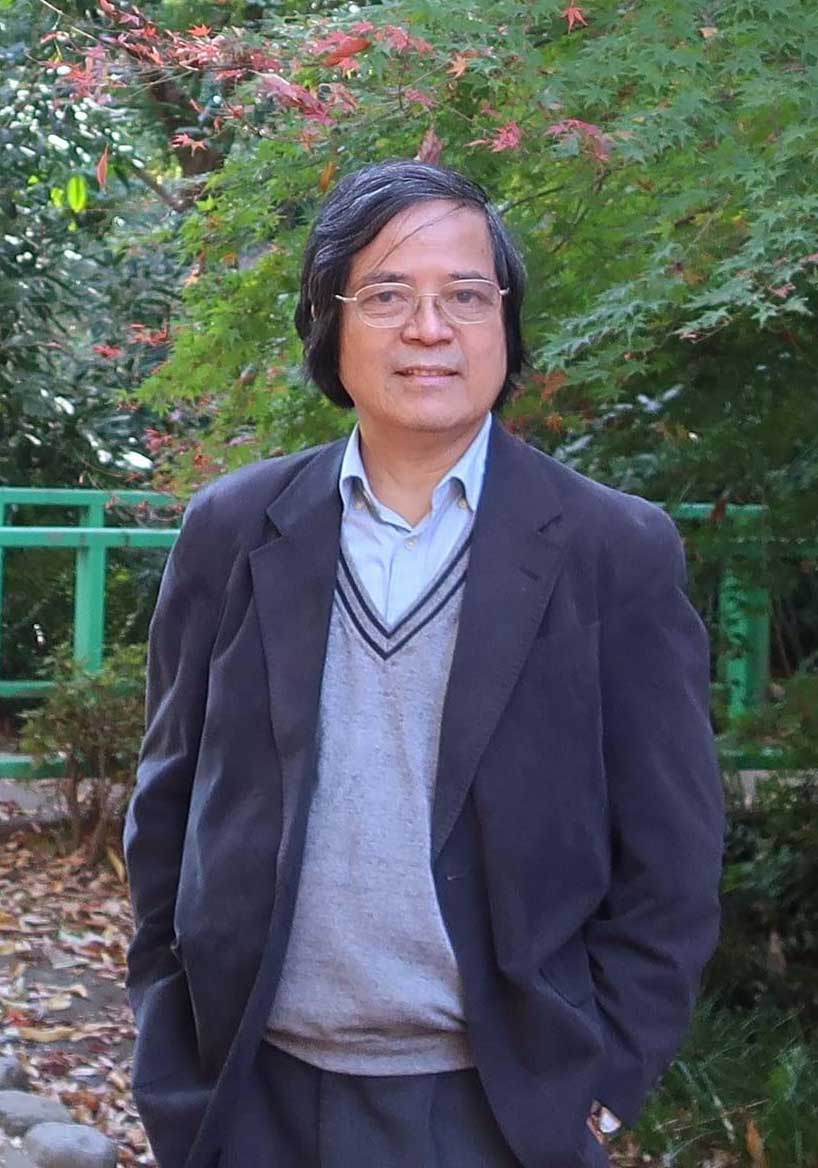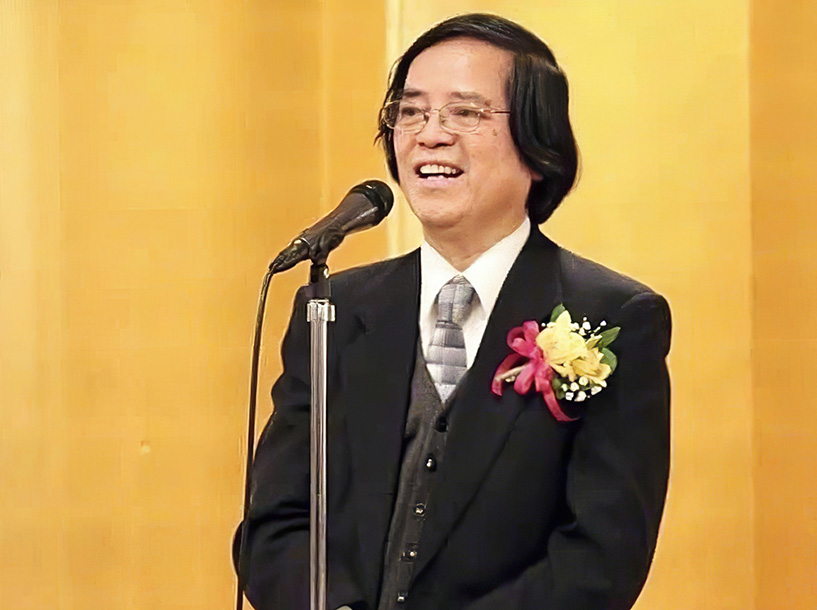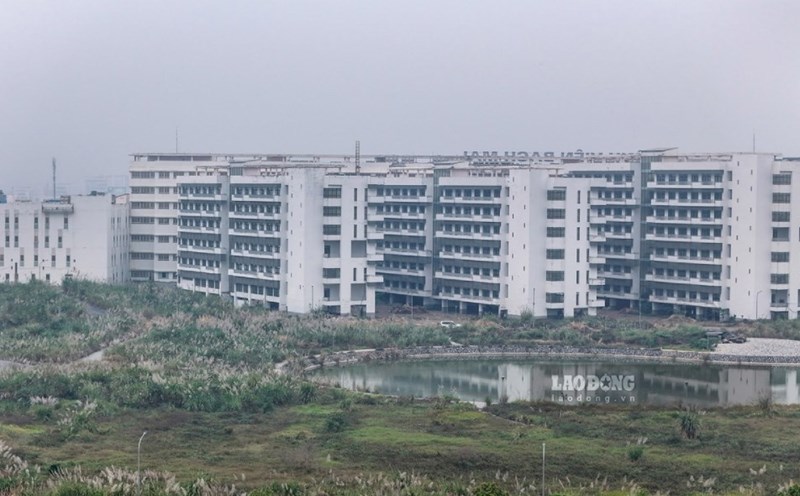Old poetry, new poetry and new formal poetry
On Tet holiday, I would like to raise a question about new form poetry, a very new form of poetry that I have not yet felt as good as old and new poetry.
I was very happy that when I returned to Da Nang at the end of October last year, when I brought this issue up for discussion with some friends during a weekend breakfast, all six of them that day had the same feeling as me. So it is not only me but perhaps many people have not yet felt the beauty of new form poetry.
As we all know, new poetry was born in the early 1930s. Many poets wanted to escape the constraints and rules of the number of words and lines in old poetry such as five-word, seven-word, six-eight, and double-seven-six-eight. The poem "Old Love" by Phan Khoi (published in Phu Nu Tan Van on March 10, 1932) is considered the first poem of the new poetry form, although there had been some initial manifestations before that. After that, many poets actively responded. Many new poems by The Lu, Luu Trong Lu, Tham Tam, Doan Phu Tu, Dinh Hung... appeared and created a poetic trend that will live forever with time.
Until writing this article, I did not know when a very strange poetic form (to me) appeared. I named it “very new poetry” to distinguish it from new poetry. During the meeting with friends in Da Nang mentioned above, I first learned that the official name of this very new poetry was “new formalism”. Later, I learned that “new formalism” was translated from the English “New Formalism”, an American school of poetry, popular since the 1980s and introduced to Vietnam about 25 years ago.
The person who introduced this poetic form to Vietnam is said to be poet Khe Iem, living in the US. In 2014, Song Huong Magazine edited and published the book Vietnamese New Formal Poetry - reception and creation (Thuan Hoa Publishing House). Reading the quite detailed book review by Nguyen Boi Nhien in Quang Tri Online newspaper (August 17, 2014), one can understand the characteristics of new formal poetry and the creative tendencies of the poets.
For example, here is one of the typical summary sentences of the book reviewer: "From the perspective of very ordinary poetry, poetry returns to real life, so poetry has no rhyme so that each poem is a life story, the musicality of poetry is created from the rhythm of reading, the narrative nature advocates everyday poetics making each poem a story of everyday life" (my emphasis).
Although I have not read much, the poems in the new formalism style that I have read do not have any rhyme. I have commented that new formalism is a very special form of poetry, the sentences do not seem to follow any rules, some sentences have only a few words, some are long, if there is no line break, it can be read as prose.
New poetry also has those characteristics, but new formal poetry is more extreme, many sentences have only one word or a few words, especially it does not have the rhythm like new poetry and therefore is very difficult to remember.

To illustrate what a poem in the new formalism is, let's try reading a poem by Nguyen Duy. Nguyen Duy is one of the poets I really like to read, his poems contain many humanistic thoughts, with universal meanings such as the verses commemorating King Duy Tan: "The sun still rises in the east/the tomb of the wise king is still built in people's hearts/many dynasties have been abolished/patriots will never lose their throne".
But in Nguyen Duy's poetry or the poetry of many others, I still like old or new poetry, but new formal poetry is... honestly, difficult to understand, difficult to remember. For example, try reading a new formal poem by Nguyen Duy and compare it with a poem in the old form by the same author.
Nguyen Duy visited Japan in the spring of 2018, and was inspired by the scene to write two poems, one about cherry blossoms in the new formalist form, and one about Mount Fuji in the six-eight form (published on the online newspaper Dien Dan, April 6, 2018):
CHERRY
Gorgeous flower
flower...flower...flower...
no leaves
Blooming
wither away
All at once
fall all at once
The grass is dotted with shimmering flower corpses.
petals falling into the sake cup
elegant person sips wine with soulmate
Peach blossoms fill the sky
peach blossom corpses covered the ground
That is when cherry blossoms are most sacred.
born
and
death
all out
Hear my heart calling
oh cherry
cherry
poet flower fresh martial soul.
MOUNT FUJI
One cloud one wind one color
a proud head raised in the snow
A house on its own
I stand tall forever. I...
(Fuji, April 2, 2018).
In terms of freedom in the number of words or the lack of rhythm and rhyme, the poem Anh Dao is not necessarily a typical poem of the new formal poetry genre. But it can be said that this poem is closer to new formal poetry than to new poetry.
Both poems by Nguyen Duy are good in ideas, full of beautiful images and the author's subtle comments. But I like the six-eight poem better. The poem is in a nearly new-form poetic form, which is unfamiliar and difficult to remember.
I remember reading somewhere that poet Nguyen Sa said that a verse or a poem is considered good when one wants to explain its meaning, one has to write it down on half a page or a whole page.
According to that definition, any form of poetry, old, new or new form, can have good sentences and poems. But in my opinion, that definition is not enough. Another condition is that poetry must have rhythm and rhyme, otherwise any sentence with profound meaning will become a good poem. For example, the famous saying of B. Pascal: "Man is a reed, but a thinking reed" is a good sentence, with profound thoughts, and to explain it would take half a page. But that is not a poem.
I think poet Nguyen Sa's above definition does not deny that poetry needs rhythm and rhyme, but rhythm and rhyme are the premise of poetry (no need to mention), and on that basis, if you want poetry to become good, you must follow his definition.
In the poem "Autumn Night Listening to Crows Cawing" by Quach Tan there are two very good lines:
The sky at Phong Kieu wharf is covered with mist
Autumn on the Red Cliff River, the Moon is Dreamy
These two lines of poetry are good according to Nguyen Sa's standards because they require half a page of explanation for readers who have not read Truong Ke's poem Phong Kieu Da Bac or/and do not know the story of Cao Cao dreamily watching the moon and reciting poetry in the middle of the Truong Giang River before the Battle of Xich Bich began.
These verses skillfully use appropriate allusions, evoking the imagination with the ethereal feeling of an autumn night with the moon and the hazy mist. These two verses are not only good because of the poetic meaning but also because of the poetic rhythm.
What would poetry be without rhyme?
It is true that poetry is usually good if it has a deep meaning. But in my opinion, there are many poems with deep meanings that readers can immediately feel, find very poetic and do not need much explanation, do not need to write a whole page to express the meaning but are still good.
Good poetry also depends on the rhythm, rhyme, and use of figurative words, which stimulate the imagination, and most importantly, are evocative and penetrate deeply into the reader's soul. There are many examples.
For example, two verses of Hoai Khanh that I read when I was in my senior year of high school, made me feel uneasy, true to the state of mind of worrying about an uncertain future:
Cold water flows down a stream of sadness
Where to go, oh colors of time.
Also thinking about time, later reading two very good verses of Nha Ca expressing the regret of a girl's passing youth:
When I come back, my small hand covers the cold weather.
Listen to the ice price wear away all childhood
An indirect way of expressing love through beautiful and easy-to-understand images is also woven into beautiful poems like in Nguyen Binh's poem:
My soul is like the clover flower
A windy afternoon, clinging to your shirt.
Coincidentally, the above examples all belong to the old poetry genre. Of course, in new poetry, we also encounter many good verses and poems. For example, “The Road to Love History” by Dinh Hung is, in my opinion, a good poem. This is a free verse poem that varies the number of words and lines, with many passages that read like prose but are still good and very poetic:
Our boat sails happily across the shore,
From the night of the flood.
My heart is cut by a knife
Split in half
Border,
The blood of horror suddenly woke up from a coma.
YOUTH: ....
A poem
There is a sigh of two loving souls,
Rhymes guide each other in dreams,
Mountains and rivers follow the lines of the letters,
Words of love,
The words waiting,
beautiful as
Your shy figure in the old afternoon.
YOUTH: ....
Take another new poem, also a good poem (excerpt from a passage):
Where is autumn?
Brown eyed sister
Blonde Microfiber Hair
Without you, the sorrow fruit is ripe red (Cung Tram Tuong)
Or a passage from the famous poem "Purple Sim Flower Color" by Huu Loan, also a good poem in the new poetic form:
A Rainforest Afternoon
Three brothers on the Northeast battlefield
Got the news of my sister's death.
before the news of your marriage
Early autumn wind makes the river water shiver
The little brother grew up
Surprised to see her photo
When the early autumn wind comes
yellow grass at the foot of the tomb
In addition to good ideas, the common point of good poems in the new poetry form is that they have rhythm and rhyme. Just like Phan Khoi's definition of new poetry: "rhymed sentences that are not bound by any rules" (According to Vietnamese Poets by Hoai Thanh - Hoai Chan).
Thus, the common point of old and new poetry is that it has rhythm and rhyme, although new poetry may be less strict. On the contrary, poetry in the new formalism style almost does not have this quality, so it is difficult to remember and memorize.
To conclude this layman's article, I would like to raise two issues or questions.
Firstly, despite the advantages mentioned above, can the new formal poetry form be positively received from the perspective of poetry readers and poetry lovers, especially those who believe that poetry must have rhyme? On this point, I would like to add that if the poem Nho Rung by The Lu, Tieng Thu by Luu Trong Lu or the poem Tay Tien by Quang Dung were composed in the new formal poetry form, how many people would remember and recite it today?
Secondly, about 90 years ago, when new poetry appeared, there was a heated debate that lasted for many years (between old poetry and new poetry), especially in 1935, which Vietnamese Poets called the year of "great chaos in the poetry village", and a year later, new poetry "won completely".
Compared to the context and situation of new poetry nearly a century ago (the debate only lasted 4-5 years before it was settled), the appearance of new formal poetry today, even though it has been 25 years, does not seem to be prominent, has not been discussed or become a hot topic of debate (there may have been discussions among poets but not yet spread to the public, there are no opinions from readers and poetry lovers).
How can this problem be explained? In addition, in the past, new poetry had the upper hand in the debate because there appeared continuously very good poems (especially by The Lu, who did not speak in the debate, but only proved it with his poems) that touched the hearts of readers.
Nowadays, new formal poetry also needs to produce poems that are widely accepted by readers to have a worthy position in the poetry world.
During Tet, chatting about poetry among poetry lovers, even non-poetry people, is a cultural pleasure. With that thought in mind, I dare to write these few lines.
Tokyo, early spring of At Ty 2025
Professor Tran Van Tho was born in 1949 in Quang Nam. In 1967, he went to Japan to study. Although he has lived in Japan for more than 40 years, he still retains Vietnamese nationality.

Professor Tran Van Tho is a researcher and has made many contributions to economic thinking in Vietnam. In a conversation with the press, Professor Tran Van Tho said that although he studied economics, he loved literature and poetry and had also intended to pursue literature. He sent Lao Dong Newspaper an article about his concerns for poetry on the occasion of the beginning of the new year. The article clearly showed the love for literature and poetry of a professor and economic expert.










